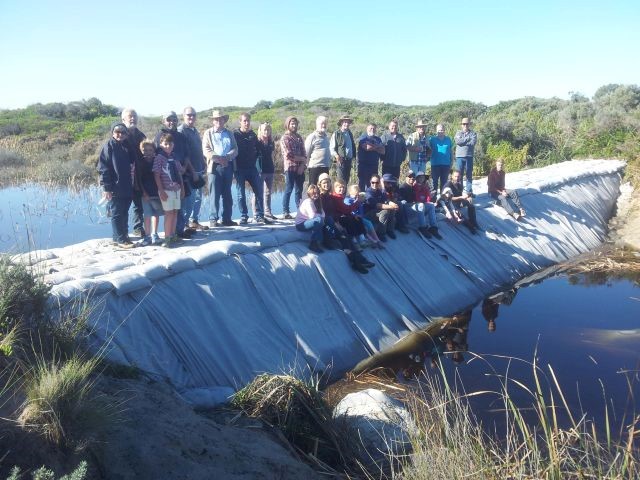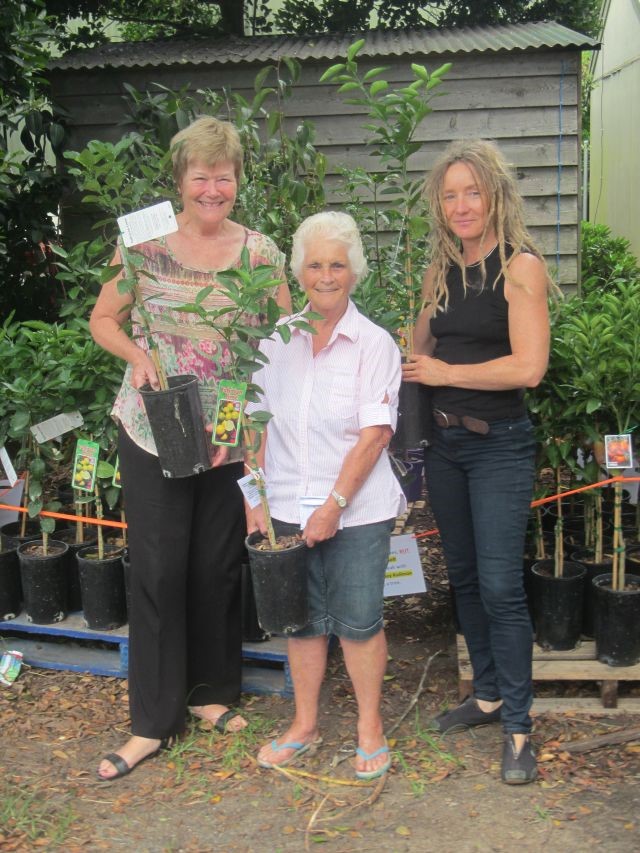Engagement with Stakeholders
Most if not all ecosystems include people. This means that lasting restoration can only occur if people who have a stake in the sites support the project. This is best achieved through ensuring that stakeholders are engaged in the process of identifying problems and are consulted to help develop solutions.
EXAMPLES:
Large scale landscapes or aquatic environments:
- Restoring river reaches, Qld
- Great Barrier Reef "Reef guardians"QLD
- Great Eastern Ranges Initiative, VIC, NSW, QLD
- Engaging with Traditional Owners, Gondwana Link WA
Regional agricultural land use change
- Regent Honeyeater Project, VIC
- Big Scrub Landcare, NSW
Urban community engagement
- Sydney Bushcare, NSW
- Merri Creek, Melbourne, VIC
Aquatic

Volunteers and friends of Nature Glenelg Trust celebrate the completion of the Long Swamp Restoration Trial structure in 2015.

Presentation of fruit trees to residents to thank them for cooperating with removing Guava from Lord Howe Island, NSW.
(L to R. CEO Penny Holloway, local resident Daph Simpson and Flora Management Officer Sue Bower).
Lessons and limitations
- Positive acknowledgement of stakeholders and respect for their interests is essential to successful solutions and the security of the project
- Involvement of stakeholders is the most effective form of engagement
- Failure to take into account the economic and cultural needs of stakeholders may mean failure to remove the stressors of degradation